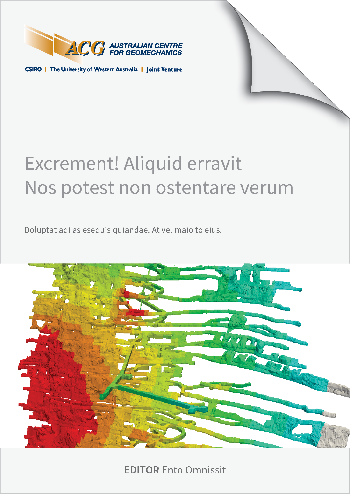Cosmic-ray muon tomography

|
Authors: Schouten, D; Phillips, N; Merrill, R |
DOI https://doi.org/10.36487/ACG_repo/2435_R-05
Cite As:
Schouten, D, Phillips, N & Merrill, R 2024, 'Cosmic-ray muon tomography', in Daniel Johansson & Håkan Schunnesson (eds), MassMin 2024: Proceedings of the International Conference & Exhibition on Mass Mining, Luleå University of Technology, Luleå, pp. 1576-1583, https://doi.org/10.36487/ACG_repo/2435_R-05
Abstract:
Cosmic-ray muons are charged elementary particles that arise naturally from cosmic radiation interacting with the Earth’s upper atmosphere. Particle showers of muons bombard Earth steadily and are attenuated by their interaction with matter along their trajectory. Muons can penetrate deep into the Earth’s crust, down to thousands of metres, and their attenuation in matter is proportional to the density of material the muon passes through. By measuring the flux of surviving muons through detectors positioned beneath the surface, the average density along each ray path in the overburden within a wide field of view above the detector can be determined. Each detector produces a radiographic image of the rock mass above it, and combining these images yields three-dimensional tomographic reconstructions of subsurface density. Muon tomography-derived density models can be used in a wide variety of settings across the mining life cycle. Ideon Technologies has successfully deployed muon tomography to monitor block cave propagation remotely, ensuring continuous cave production and avoiding operational hazards. This paper will present how muon tomography can be used to accurately delineate the ever-changing parameters of block cave edges, the growing air gap created, and the muck pile forming at the cave bottom, including the ability to resolve with a quantifiable precision of less than 20 metres across an entire cave, and on the order of 10 metres for most of the cave.
© Copyright 2025, Australian Centre for Geomechanics (ACG), The University of Western Australia. All rights reserved.
View copyright/legal information
Please direct any queries or error reports to repository-acg@uwa.edu.au
View copyright/legal information
Please direct any queries or error reports to repository-acg@uwa.edu.au